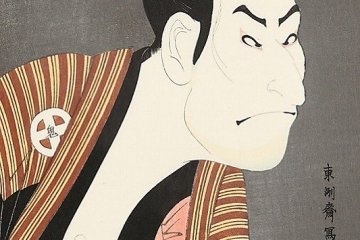Although having significant historical and cultural importance, the advent of kabuki is sometimes seen as controversial as it was first initiated with female performers. In line with the moral sensibilities of the time, they were soon banned from the stage in 1629 as it was considered disruptive of the public morale by those who thought they knew better. Since then, kabuki performances - including female roles - have been performed only by men.
During this early period, kabuki started out as an outdoor dance performance by groups of female dancers. The contents and themes were mostly about religion but sometimes consisted of the stories about life in the town. It was based mainly on the historical stories of samurai, their battles as well as contemporary stories about the daily life of the common people and merchants. Even then, kabuki was very much about the impressive and interactive with flashy costumes and acrobatic performances making the atmosphere quite different from other prevailing theater shows.
The differences can be felt from the rhythm and sophistication of the language used. Musical instruments like the shamisen which was introduced into Japan in the 16th century from China, are used in these performances. Kabuki stages are also built in a way to further increase the involvement of the audience by adding a sense of closeness between them and the performers. To accomplish this, the theatre consists of a hanamichi, a kind of bridge or walkway linking the central stage with the back of the theatre.
Similarly, suppon is an elevating stage trapdoor from where actors can suddenly appear or disappear. Mawari-butai is a moving and revolving theater that helps to create an element of surprise through special effects. Back then, audiences were mostly people living in the towns who paid to watch the show and they weren't considered merely as an audience but as supporters of the actors and performances. This support gradually lead to changes until kabuki became extremely popular with fans crowding the theatres regularly.








